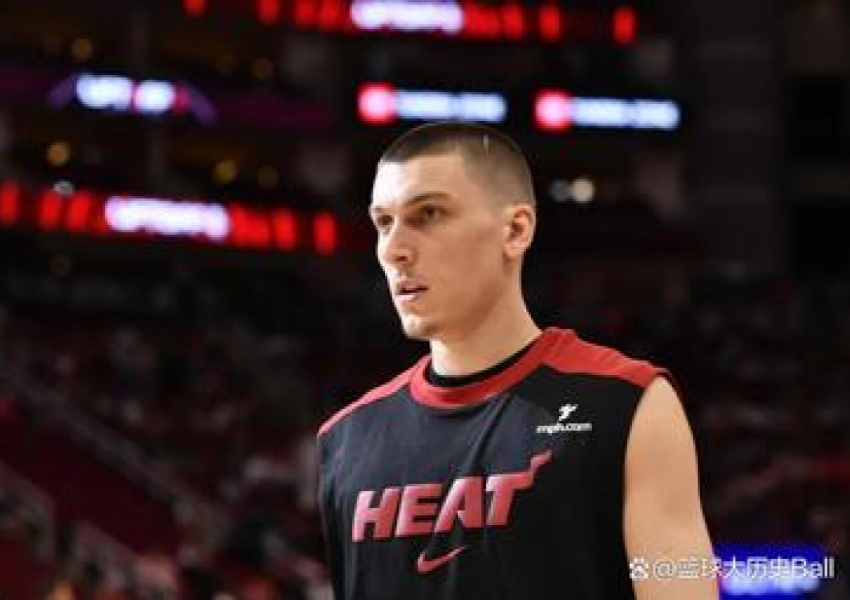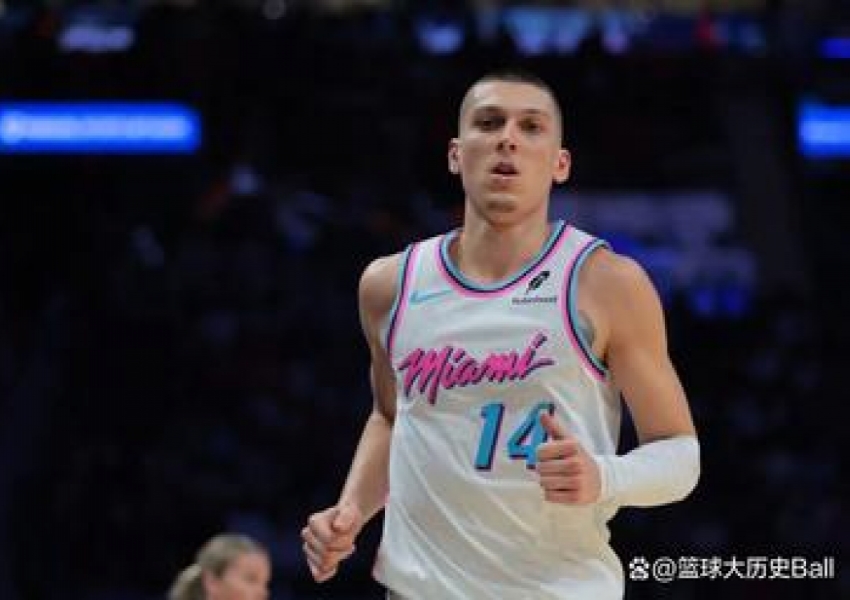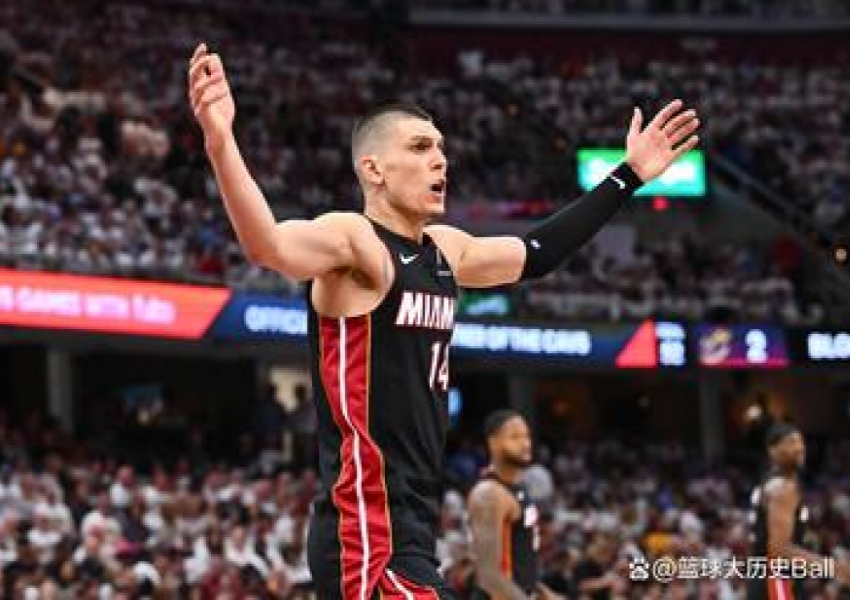-44 Plus A Disastrous Performance: Is Tyler Herro Really the Face of the Miami Heat?
The Miami Heat’s season came to an ignoble conclusion after a humiliating 83-138 loss to the Cleveland Cavaliers in Game 4 of their first-round playoff series. The Heat were swept 0-4, with the game serving as the final, painful chapter in a disastrous postseason campaign. From the opening tip, it was clear that this game would not be competitive. The Heat found themselves trailing by 26 points after the first quarter, and by halftime, that deficit had ballooned to 39. As the game wore on, Miami's humiliation grew; at one point, they were down by 60 points. To give some context, a 55-point playoff loss is the fourth-largest margin in NBA postseason history—only surpassed by defeats of 58 points. The Heat were on the verge of becoming the first team in NBA playoff history to lose by 60 points. It wasn’t until the final two minutes, when bench players Keshad Johnson and Pelé Larsson contributed 5 garbage-time points, that the Heat avoided this record-breaking humiliation.

But amid the historical defeat, the most glaring issue for the Heat was the performance of their so-called franchise player: Tyler Herro. Herro's Game 4 was a career-defining disaster, one that he’ll likely never live down. In 31 minutes of action, Herro shot just 1-of-10 from the field, including 1-of-9 from three, and 1-of-2 from the free-throw line. He finished with just 4 points, 1 rebound, and 1 assist—an appalling stat line for someone considered to be a cornerstone of the franchise. To make matters worse, Herro posted a team-worst plus-minus of -44, a number that reflects just how ineffective he was on both ends of the floor.

It wasn’t always this bleak for Herro. His performances in the first two games of the series were decent, though not spectacular. In Game 1, he scored 21 points, grabbed 3 rebounds, and dished out 2 assists, shooting 7-of-18 from the field. Game 2 was even better, as Herro put up 33 points, 6 rebounds, and 5 assists on 14-of-24 shooting. However, everything changed once the series shifted to Miami. In Game 3, he was much less effective, scoring just 13 points, with 4 rebounds and 3 assists, in yet another crushing 37-point loss. In total, the Heat lost each of the four games by large margins: 21 points, 9 points, 37 points, and 55 points, respectively. The team’s cumulative margin of defeat over the series was an eye-popping 122 points, averaging a 30.5-point loss per game—both of which set new records for the largest playoff losses in a series.

Herro’s struggles weren’t limited to his offense. On the defensive end, he became a target for the Cavaliers, who exploited his weaknesses relentlessly. Throughout the series, Herro’s defensive deficiencies allowed Cleveland’s backcourt to attack him with impunity. His individual numbers were staggering: Darius Garland, in just two games, called out Herro by name, pointing out that attacking him was a key to Cleveland’s success. Garland said, "The key to this series is targeting Tyler Herro and making sure we avoid forcing turnovers. Attack his weak side." Garland’s assessment turned out to be dead-on. In head-to-head matchups, Donovan Mitchell shot 8-of-13 for 21 points in 20 possessions against Herro, Garland scored 16 points and added 5 assists on 6-of-10 shooting in 22 possessions, and Jerome shot 9-of-9 for 18 points and 4 assists in 33 possessions against Herro. It wasn’t just the stars—role players like Hunter and Strus also torched Herro on the offensive end.
To be fair, Herro’s regular-season performance was more than respectable. He appeared in 77 games, averaging 23.9 points, 5.2 rebounds, and 5.5 assists, while shooting 47.2% from the field, 37.5% from three, and 87.8% from the free-throw line. His true shooting percentage of 60.5% made him a legitimate All-Star this season. However, the postseason has proven to be a different story entirely. Herro’s inability to perform in the playoffs is becoming a concerning trend. His postseason numbers have consistently underwhelmed when compared to his regular-season production.
Let's take a look at how Herro’s playoff performance stacks up over the years:
-
2021: Regular season: 15.3 points | Playoffs: 9.3 points
-
2022: Regular season: 20.7 points | Playoffs: 12.6 points
-
2023: Regular season: 20.1 points | Playoffs: 12 points (injured after one game, missing out on the Heat’s run to the Finals)
-
2024: Regular season: 20.8 points | Playoffs: 16.8 points
While Herro’s overall playoff sample size—50 games—may not be small, his shooting numbers in the postseason have been poor. He is shooting just 41.4% from the field and 32.8% from three, which is far below the standards expected of a player whose primary job is to score. These numbers are compounded by his defensive liabilities, which have made him a consistent weak link on both ends of the floor.
What’s most troubling for the Heat is that this isn’t a one-time playoff collapse for Herro—it’s part of a larger pattern of underperformance. Unlike players such as Jimmy Butler, who consistently raise their game in the postseason, Herro has repeatedly failed to show up when it matters most. His inconsistency in the playoffs raises serious questions about his ability to be a franchise player capable of leading a championship team.
It’s not just about his stats. It’s about what Herro’s performances say about his potential as the face of the Heat franchise. Despite being the team’s only All-Star this season, his inability to deliver in clutch moments is becoming more and more glaring. And while Miami is clearly trying to build around him, Herro’s postseason struggles have shown that he may not be the leader the team needs.
Miami’s failure in this playoff series reinforces one undeniable truth: Jimmy Butler is the soul of this team. Two years ago, Butler led a much less talented squad to the NBA Finals, taking the Los Angeles Lakers to the brink of a championship. Without Butler this season, the Heat’s weaknesses have been exposed, and the team has been decimated by playoff opponents.
Herro, with all of his talent, may simply not be cut out for the kind of pressure that comes with being a franchise player. His performance in this series, particularly in Game 4, has called into question his place in Miami’s future plans. If Pat Riley and the Heat organization believe Herro can lead the team to an NBA title, then it’s a belief that is severely misplaced.
Looking ahead, the Heat’s next move will be critical. They have to decide if they can truly rely on Herro as a centerpiece or if they need to shift their focus to building around Butler and potentially adding another star to help them compete. Herro’s limitations have become impossible to ignore, and while he may still have a future in the NBA, it’s unlikely that future will be as the unquestioned leader of the Miami Heat.
Ultimately, this series has revealed something crucial about Herro: He is a talented player, but when the lights shine brightest, he struggles to deliver. If the Heat hope to compete for championships, they’ll need to reconsider their reliance on him as the face of the franchise. And if this postseason has proven anything, it’s that Butler, not Herro, is the true cornerstone of the Miami Heat.
Copyright Statement:
Author: focusnba
Source: FocusNBA
The copyright of this article belongs to the author. Reproduction is not allowed without permission.
Recommended Blog
- First to Go? Lakers’ Trade Plans Signal the End of the Road for Dalton Knecht
- Matching Greatness: Just How Special Has Jalen Brunson Been in These Playoffs?
- Dominating the Lakers: Just How Good Is Julius Randle in the Playoffs?
- Lakers Sent Packing in Round One: Who’s Really to Blame?
- $297 Million for 22-Year-Old Paolo Banchero — Is He Worth It?
- Farewell Milwaukee: The Bucks Are Stuck, and Giannis' Next Chapter Awaits
- From #1 High School Player in America to the NBA's Toughest Enforcer: What Did Isaiah Stewart Go Through?
- No Regrets! Mavs Management Responds Again on Doncic Trade, Still Standing Firm?
- What Defines Genius? From Guard to Center, Overcoming a 50% Decrease in Talent, Yet Still Becoming a Top NBA Star
- Best Sixth Man? Just How Good Is Payton Pritchard, Who Earns $6.7 Million a Year?